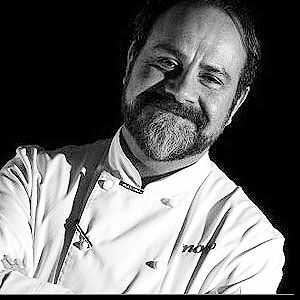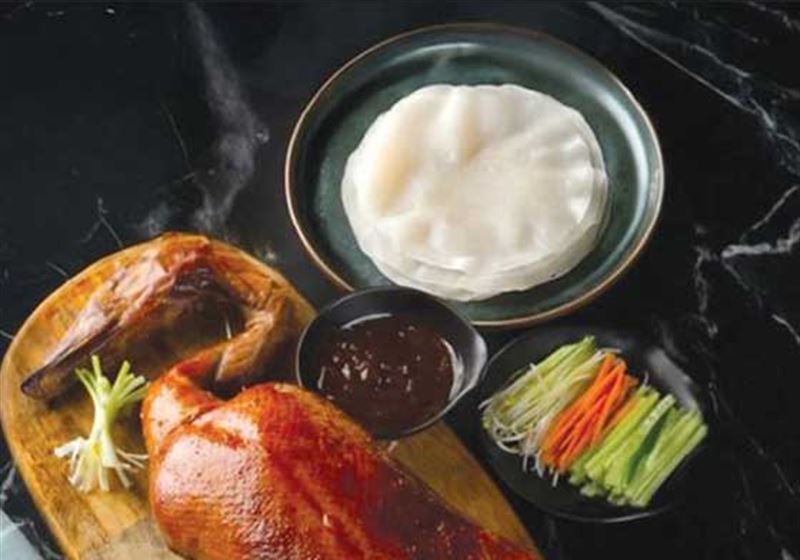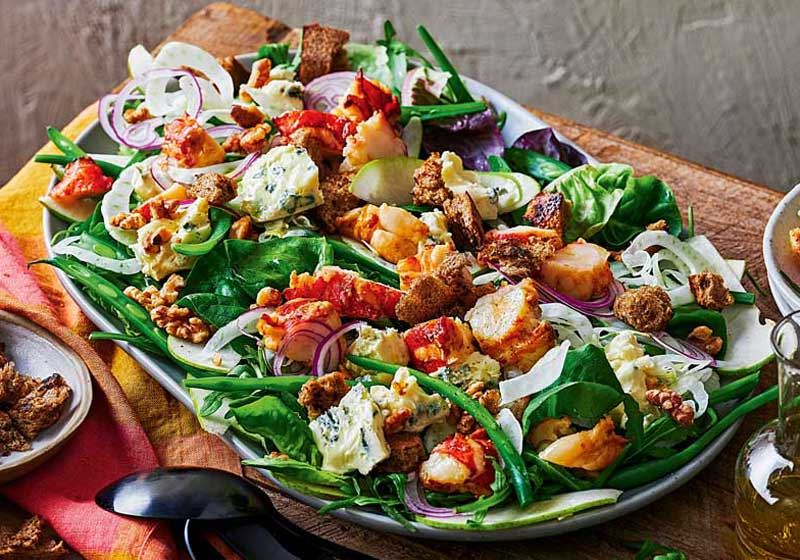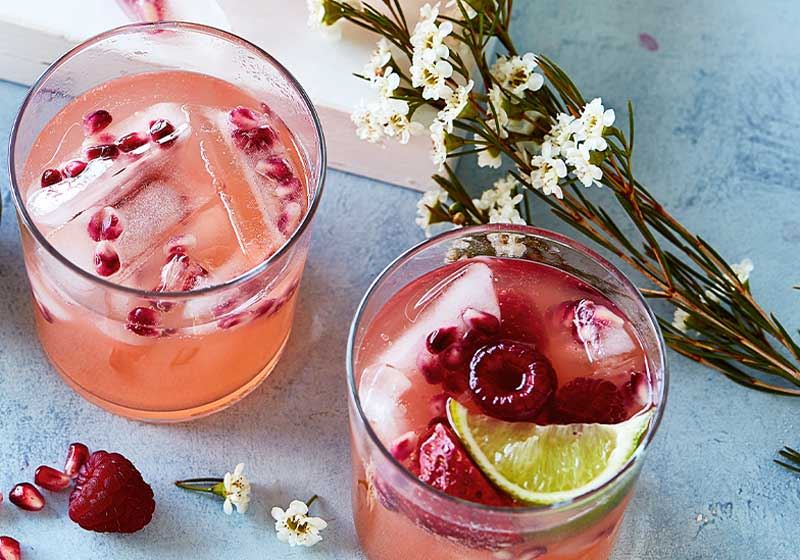Greg Malouf

By Guest
Blogger: Vicki Williams, associate editor, WOM guide. Article first appeared on www.womguide.com
History: Award-winning Aussie chef, Greg Malouf, has
been passionate about food ever since he can remember, and his decision to
become a chef meant going against the wishes of his family. Although his early
food influences were based around Lebanese cuisine it was a long journey for
him to come back to his roots. His first restaurant job was in a Mexican
restaurant in
Malouf is now considered an expert and leading proponent of modern Middle
Eastern cuisine, which is quite an achievement given that he has only been
focusing on the cuisine as a chef since the late 1990s. First with the book,
Arabesque, published in 1999, followed by becoming head chef of noted Melbourne
restaurant MoMo in 2001.
Have you always wanted to be a chef?
I was quite young, in my early teens. I had a massive appetite, I loved eating!
Coming from a Lebanese background we always had a fridge full of exotic dishes,
always a full table of Lebanese mezze. I was never allowed in the kitchen
though, not even when I expressed an interest in becoming a chef. I guess it
was partly cultural, but Dad did cook, as did my grandmother who lived with us,
so think it was more about keeping the kids out of the kitchen.
Your cuisine is described as Modern Middle Eastern, how is it modern?
The cuisine is old, but I am doing my adaptation of an old cuisine and the food
memories of my childhood, familiar ingredients and produce as a starting point.
It is hard to describe it any other way. After 30 yrs of cooking my repertoire
of Middle Eastern dishes has increased. I still continue to think about the
effort and make an effort, but there is a sense of ease now.
I also have a sour palate, and this does influence my food, with my dishes
featuring sour notes or refreshing herbs to counter and balance the sourness.
Other than regular guest chef visits, what is your involvement with Olive?
I was the founding menu consultant and I am still involved with the menu
writing and putting chefs in place. The new chef, Eric, has worked with me
previously. In fact the three chefs that have worked at Olive over the six
years it has been open have worked with me and are my recommendations. I don't
think the restaurant would operate successfully without the right chef in
place. The chef needs to understand me and my food. Chefs that have worked for
me have done so for a reason, to understand Middle Eastern food.
Which dish on the Olive menu is most like the food you serve at MoMo?
MoMo is a lush restaurant and the food served is more high-end, more layered,
more structured with main courses costing AUD$50. There is one dish that is
served at both and is a signature at both, the Bisteeya pie.
You travel a lot, write cookbooks, have your own spice line, and offer a
consultancy service, how much of your time is actually spent cooking?
I travel approx. eight weeks a year, the rest of the time I am at MoMo. This
year also sees me back at the stoves, focusing on proteins. I might slow things
down a bit as I am older, but I do touch every plate coming out of the
restaurant when I am there. I really enjoy being at the stoves again. I also
create specials and demonstrate to the staff how to do those dishes.
You have
published four cookbooks, what, in your opinion, is the secret to writing an
award-winning cookbook?
A clever ex-wife! (he says with a big smile).
She is a wordsmith. I dream, she writes and we travel together, during which
masses of notes are taken. I do the dishes and she writes the stories. The
recipes are all tested. The food photography is vital. The whole process is
important, even down to the paper used...we have a team working on each
book.With each book I find the research fun, unlocking the secrets, learning
the historical info and origins of the dish. Even the meaning of the dish names
adds to the experience, for example Baba Ganoush, means father's favourite. .
Which do you
find more fulfilling, the restaurant and cooking, or the books?
Both are fulfilling different things in my life. Ultimately the most rewarding
thing is serving food to customers.
Tell me more
about the new book you are writing on Persian cuisine, and why you chose this
cuisine?
The book is called Saraban, which means the main person who leads camels through
the desert. We are currently in the recipe testing stage with a release
scheduled for November.
I also knew that
food wise, it would be different to any other country. And, also there is not a
lot written about the cuisine in a modern context. I think it will be a good
book for second and third generation people of Iranian descent that have not
lived in
It is part cookbook and part travel guide, like all our books.
Does
producing cookbooks get easier with each one?
No, the opposite is true, it gets harder with each book. In the case of Saraban
my palate was not used to the cuisine and I had to get to know it before I
could create recipes.
I also worked with ingredients that were unique in some senses and unfamiliar
techniques. For example,
I hear that
you are opening another restaurant in Broome (
I am not an owner of restaurants, I am a chef and consultant. What is true, is
that I am acting as a consultant to both restaurant projects. I am doing menus,
similar re my menu consultancy for Olive, for a restaurant in Broome for Pas
Pala Pearls. In
I have read
that you consider Michelle Garnaut as one key person who has influenced your
career, and that the her now closed M at the Fringe was your favourite
restaurant, tell me more.
I first met her at Post 97 when there was only a handful of standalone
restaurants in
Which are
your favourite restaurants now M is closed?
In
What is your
favourite comfort food?
I think that your favourite comfort food is something you ate as a child, so
for me it would be Lebanese dishes, such as yoghurt soup.
You mentioned
falling ill and I have read about your health problems over the years (triple
heart bypass and two heart transplants), have you had to change the way you
work and the way you live/eat as a result?
It definitely slowed me down, and for a while it was one step forward and two
steps back, and it was disruptive, but I also understood the importance of
health. Diet wise I had to reduce high cholesterol foods. I did try over the
years to increase the amount of exercise I did. I recently remarried and my
wife is younger than me so that is proving to be good exercise!
Courtesy of Guest Blogger Vicki Williams Published 27.05.2010http://www.womguide.com/
Image Credit: HP, 1, 2, 3, 4, 5
courtesy Olive; 7, 8, 9, 10 courtesy Greg Malouf; 6 from WOM article on Saffron.











